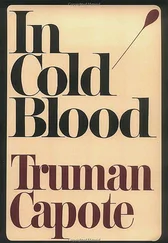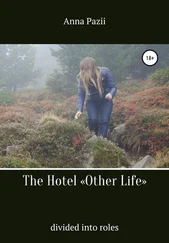The account was told with sober conviction, and in that setting — in Sumatra, generally — it was easier to accept as truth than it would have been in Seattle, or even Appalachia. There is something a little spooky about the Indonesian hinterlands, a dark undercurrent, a sense that preternatural forces are at play there, generating in foreign visitors skin-prickling sensations that cannot be easily dismissed as mere susceptibility to the primitive fears of superstitious locals. As the rangers talked about the haunted room, there was around our campfire an epidemic of goose bumps, and people kept looking at me as if I, a survivor, might have something to add. I did not.
I did not. But why not? Why hadn’t the jungle girl, this unexpected manifestation of my boyhood Sheena fantasies, come for me? Under scrutiny, I developed several on-the-spot theories to explain why I could have been rejected. First, I had an aching back, not a promising attribute in a prospective lover. Moreover, for that back pain I’d swallowed at bedtime a Percocet, an opiate that renders one sleepy, dopey, and limp. I could have been so drugged that I hadn’t heard her call, or she might have sensed that I wouldn’t have been of any use to her anyway and let me be.
Then there were the mushrooms. In Sumatra, Borneo, and a few other places in that part of the world, there grows a phosphorescent shelf fungus, a mushroom that literally glows in the dark. That afternoon, on a short impromptu venture into the jungle, I’d come across an outcropping of that luminiferous species attached to a fallen limb, a dead branch about the length and circumference of a baseball bat. On impulse, I brought it back to the house, where I stationed it in the doorway of what I was hoping to be my room, thinking it could serve as a kind of organic night-light. It appealed to my romantic sensibility, but for some arcane arboreal and/or mycological reason, it might have signaled the lethal nymph to keep her distance.
There was one other possibility, one, that is, if I discount the possibility that she simply found me physically unattractive. Pinned to the otherwise bare wall of the little room was a page torn from a missionary tract or some Sunday school pamphlet, a color picture (no words) of a solitary Jesus kneeling in prayer in a wide shaft of moonlight. Drawing upon my Baptist upbringing, I recognized the scene as the Garden of Gethsemane, where Jesus went to pray alone on the night before his crucifixion. Someone with a pen dipped in or filled with silver ink had elaborately outlined all of the contours in the picture, paying special attention to the beam of moonlight, energizing it with a heavy sprinkling of silver dots. From an artistic perspective, the effect of these embellishments was quite interesting. They added aesthetic and emotional weight to an otherwise rather hackneyed illustration, and I removed the picture from the wall, intending to take it home as a souvenir.
Later that evening, however, I’d begun to feel increasingly uneasy about confiscating the picture, and just before retiring, I’d retrieved it from my pack and tacked it once more to the wall. Now, around the campfire on the Alas, I found myself wondering if that picture had been placed in the “haunted” room for the specific purpose of keeping the female demon at bay. If so, the doctored image of Jesus may have saved my scrawny white butt.
Lest anyone presume that this incident had motivated me to end my estrangement from organized religion, I hasten to explain that while I’m obviously aware that he is the figurehead of a vast rich and powerful theological institution, I’m disinclined to think of Yeshua bin Miriam, the man we call Jesus, as a religious figure, at least not in any theological sense. What he was, rather, was a wandering Jewish zealot whose philosophical axioms and behavioral advice (assuming they hadn’t been put in his mouth decades after his death by evangelists hustling a new dogma, as some scholars contend) differed not appreciably from the pronouncements of other great spiritual teachers operating in China, India, and Persia at about that same time. That said, could his visual image, so creatively enhanced by a believer’s silver ink, have been powerful enough to repel the enchantress? It’s irrational on the face of it, of course, but in some transdimensional interchange to the left of space and to the right of time (where was the Frito pack when I really needed it?), might the souped-up aura of the Savior archetype have produced a divine spark that checkmated the bewitchery of the universal seductress? I had to wonder.
As for the woman herself, I’ve since had second thoughts. The rehabilitation compound existed for the purpose of teaching domesticated orangutans how to be wild again. Maybe she called men back to the forest to teach them the very same thing.
Despite the bone-gnawed, marrow-sucked skeletons allegedly in their metaphoric closet, the Karo Batak were Harvard-educated Park Avenue socialites compared to the Yellow Leaf People, an elusive nomadic tribe that needs (if it even still exists) no lesson in wildness; so primitive, in fact, it hasn’t even a name for itself. My bride Alexa and I and some fellow travelers (another Sobek excursion) learned of its existence during an overnight stay in the Hmong village of Ban Huai Yuak deep in the hills of northern Thailand, circa 1995.
Fairly primitive itself (no electricity, running water, or motor vehicles), this contingent of Hmong, however, did possess knowledge of the outside world and was warmly hospitable. On the first of our two nights with them, the Hmong staged a welcoming ceremony for us, a production that involved a great deal of very slow, very mannered dancing around a large bonfire, at the conclusion of which they attempted, without much success, to teach us one of the dances. Feeling we should reciprocate, Alexa and I tried to teach them the simplest Western dances we could think of: the Mexican hat dance, and the bunny hop. The result was not pretty. Mentally and physically unable to fit the movements into their frame of reference, they were even more inept at our dances than we’d been at theirs, and that’s why, should you visit the Thai hills today, you’re not likely to find anybody doing the bunny hop.
Early the next morning, a scout arrived in the village with the news that he’d seen a plume of smoke rising from a distant, normally uninhabited valley, a sign, the Hmong believed, that Yellow Leaf People could be in the vicinity. Hurriedly, we formed an expedition that included a villager who’d had some previous success in communicating with the little tribe. How little — it was estimated that fewer than 150 members were left alive, including two or three groups in Thailand and one in Laos — it was hard to know. They lived in the forest in temporary lean-tos that they fashioned from sticks and green leaves. When the plucked leaves began to turn yellow — which normally takes about two weeks — they would move immediately to a new location and build new shelters, believing it terribly bad luck to sleep beneath dying vegetation. Hence their name.
The Thai government had tried unsuccessfully to assimilate them, Christian missionaries had thrown up their hands and despaired of ever converting them, a resistance that naturally earned my initial respect, although once we were among them (after an arduous hike of several miles up and down a major hill), it was difficult to find much to admire — except their skill at climbing trees, an activity they performed literally with the speed and agility of monkeys. Despite my interest in mycology, the fungus growing in patches here and there on their bodies held such a minimum of fascination for me I didn’t bother to inquire if it glowed in the dark.
There were perhaps thirty people in this group, only one of whom ever conversed with our guide. We had brought them a slaughtered piglet, which they summarily hacked up with a machete, wrapping the pieces in leaves and tossing them into the fire. When they deemed the meat sufficiently cooked, the pieces were retrieved from the flames and distributed among the members. They offered us none. Neither, in fact, had they thanked us, not even with smiles or gestures, for the gift. They, in fact, had failed to greet us or show surprise when we turned up unannounced, and they did not say good-bye when we departed. I had the impression that once we were out of sight, they would maintain no particular memory of our ever having been there. It was as if they were night clerks at a Charleston hotel and we were all Neil Young.
Читать дальше












